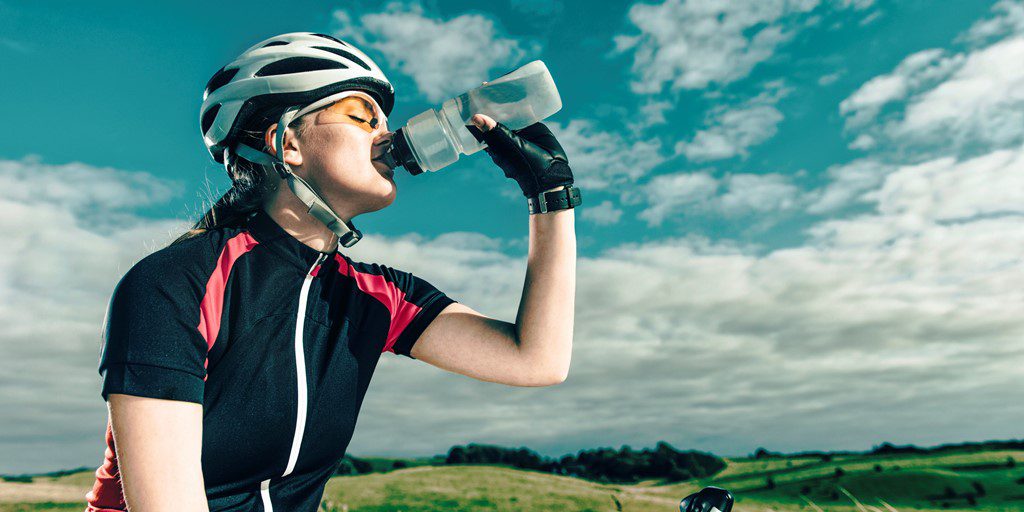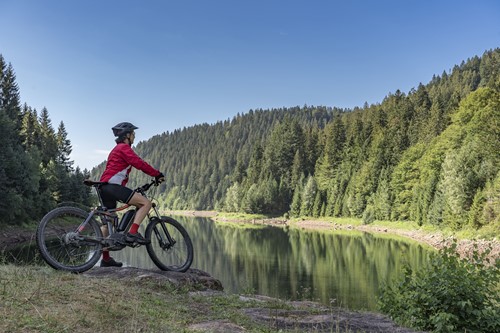How to stay hydrated while cycling: 5 top tips

In this blog, we’ll cover our top five tips on how to stay hydrated while cycling, but first, if you’re a cyclist, it’s important that you know why you need to hydrate correctly, how much you should be drinking, and what the best drinks are for when you’re out and about on your bike.
Despite its importance, it may surprise you how many people don’t know how to stay hydrated while cycling, with so many cyclists getting it wrong when they’re out and about. It’s easy to over or underestimate how much you need to drink to be at your optimal performance whilst cycling. But performance aside, not staying properly hydrated during intense exercise can be disastrous for your overall health.
Why is it important to stay hydrated while cycling?
When you sweat, you begin losing some of your body weight. In the past, it was thought that a drop in body weight of just one to two percent could reduce performance by up to 20 percent and severely impact your health. However, this has been largely disproven in recent years, but that’s not to say there aren’t dangers.
It is now thought that performance and physiological changes will not occur until three percent of body weight is lost. It’s not a huge difference, but research is starting to uncover why changes are occurring.
When you ride your bike, your muscles produce a tremendous amount of heat, which raises your body temperature. But if it rises too high, the cardiovascular system—which is responsible for transporting nutrients, water, and oxygen throughout the body—won’t be able to work as efficiently.
In order to stay cool and maintain your core temperature, the body starts to sweat and increases blood flow to the skin, where heat can escape. Failure to replace the fluids being lost diminishes sweat rates, and core temperature rises even further, which could lead to cramps and severe heat exhaustion. Our tips on how to stay hydrated while cycling below will give you some ideas on how to ensure you’re replacing the fluids you’re losing at a healthy rate so you can perform at your best.
A study published by the Journal of Sports Sciences even found that dehydration can cause cyclists to experience increased perceived pain during endurance cycling. Read our blog on long-distance cycling tips for further advice on properly preparing for more physically and mentally challenging cycling.
How much should I drink when cycling?
It can be very difficult to recommend specific hydration plans. Factors such as fitness levels, body weight, environmental conditions, and metabolic efficiency all affect how much you sweat.
However, if you’re looking for somewhere to start, consume 120ml to 180ml every 10-20 minutes and then adapt by paying attention to how it affects you and your cycling.
On the other hand, drinking excessive amounts of fluid can leave you feeling bloated and possibly dilute your sodium levels further. This can result in fatigue and sickness as your stomach struggles to deal with such a large quantity of fluid. This is known as hyponatremia. Remember, more isn’t always better!
What’s the best drink for staying hydrated?
For anything under 90 minutes, cold water is more than adequate. However, for longer bouts of cycling, consume a sports drink with a carbohydrate content between 4 and 8 percent. This will replace both fluids and carbohydrates.
You can also help improve your hydration through certain foods, which can help break up the monotony of glugging bottle after bottle. For example, a cheese and ham baguette contains 240mg of sodium as well as carbohydrates and protein. Food will also soak up any excess fluids sloshing around in your stomach. Fruits such as watermelon and vegetables like lettuce and cucumbers also have a high water content, so they can be useful for replacing lost fluids.
If you want to make staying hydrated even easier, especially on longer cycling routes, getting yourself a hydration pack for cycling is a great way to ensure the drinks you take with you are readily available when needed.

How to stay hydrated while cycling: our top 5 tips
Start hydrated
The International Olympic Committee believes starting hydrated is the easiest and most effective way to minimise dehydration over time. As mentioned above, the amount that you need to drink to stay hydrated while cycling will vary from person to person based on a number of factors, but you can control how much you drink before you ride.
It is widely accepted that you should drink 500ml of water two to three hours before you exercise. You can also ensure you’re better prepared for your ride by having a good breakfast, so you have all the energy you need to perform at your best.
Monitor your hydration
When monitoring your hydration, it helps to understand some of the symptoms of dehydration before the effects become more serious. These include thirst, dry mouth and lips, feeling dizzy and tired, and a change in urine colour.
These may sound obvious, but they can often be ignored or dismissed while on your bike. As soon as you get any of the above symptoms, take the time to stop and rehydrate with whatever drink you have before they worsen.
Hydrate after you cycle
Your hydration routine should continue even after you’ve finished cycling to ensure you replace any lost liquids. Even if you’ve closely monitored your hydration before and during your ride, it always helps to continue hydrating afterwards to look after your health and keep you ready for your next ride.
One way to ensure you’re maintaining correct hydration levels post-ride is to weigh yourself before and after, so you can calculate the approximate amount of water you’ve lost during your ride. This is known as the sweat loss test.
Replace lost salts with electrolytes
In extremely hot conditions, where you feel you are losing a lot of fluid, opt for a specific hydration drink that contains 300-500mg of sodium per 500ml of liquid. Sodium plays an important role in your body—most notably, transporting nutrients into cells for energy production, and tissue growth and repair. However, sodium is lost through heavy sweating, so it needs to be replaced, particularly in hotter weather conditions.
Practice hydration through training
Like many things, the best way to get hydration right is through practice. You can try different drinks and methods of monitoring your hydration to see what works best for you. Ultimately, staying hydrated will look different for every cyclist, whether you’re just taking your bike for a spin or training for a sportive.
Ready to try out our list of cycling hydration tips on your next ride? As we’ve discussed, knowing how to stay hydrated while cycling is crucial to your performance.
But before you head out for your next ride, you might also want to consider specialist cycling insurance for extra peace of mind should something go wrong.
Cover through Cycleplan protects your bike against theft, loss, and damage. You can also get up to £1,000 worth of equipment cover, so you can rest assured your essential items are protected. Find out more here or get an instant online quote today.






